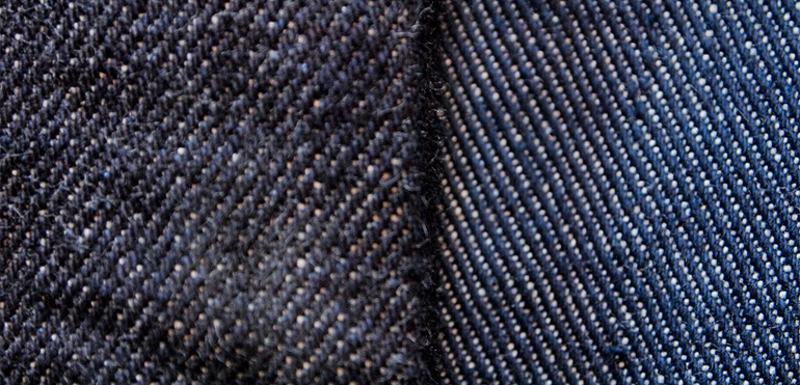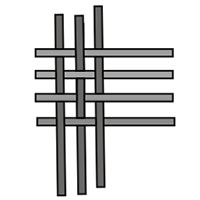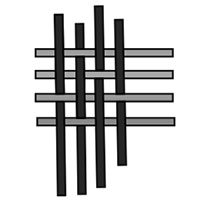IH-526L - 19oz Left-Hand Twill Selvedge Denim Type III - Indigo
-
@Giles said in A Nerd’s Guide to Right Hand and Left Hand Twill Denim:
This is going out in the next newsletter, I therefore had to make it briefer than I would have liked. I will add more, when I have a mo…..
A Nerd’s Guide to Right Hand and Left Hand Twill Denim
What is a plain weave?
On a loom, the warps run the length of the fabric and the weft (or “filling yarn” or just “filler”) run across the width of the fabric at 90° to the warps. On a plain weave fabric, each weft thread crosses the warp threads by going over one and then under the next one, and so on. The next weft thread goes under the warp thread that its neighbour went over and vice versa A plain weave fabric, also known as a 1/1 weave, looks the same on both sides. Examples of a plain weave are chambray and canvas (duck).What is a twill?
Just like a plain weave, a twill fabric consists of warps and wefts. However, in a twill weave, the weft passes under one or more warps and then over two or more warps. The next weft will “step” or offset one warp, this creates the characteristic diagonal line (known as a “wale”) that identifies a twill fabric. Twill weave is often designated as a fraction such as 2/1, where the weft passes over two warps and then under one (two up, one down). Twills have a front and a back side and look different on the face and the back. Because a twill fabric has fewer interlacings than a plain weave it allows the yarns to move more freely, which is one of the reasons that denim, which is a twill, shapes to the body well. Finally, because a twill has an uneven surface, stains are less noticeable than on a plain weave fabric, which is good for workwear such as jeans.What is right hand twill?
Right hand twill or “Z” twist is the most common weave found in denim jeans. In a right hand twill the diagonal twill line or wale goes from upper right to the lower left on the face of the fabric. Because the direction of the weave loosens up fibres in the warp yarn you typically get a rougher, darker face to the twill and little weft of filling yarn showing through on the face of the twill. Thus, all other things being equal, a right hand twill denim will appear darker.What is left hand twill?
In a left hand twill or “S” twist, the wale goes from top left to bottom right on the face of the fabric. In a left hand twill, the warp gets tightened during the weaving process, thus the result is typically a smoother face to the fabric. Also as more of the weft (or filling yarn) is seen on the face of the fabric, the denim will often appear to be of a lighter hue than an equivalent right hand twill.
Right Hand Twill Left Hand Twill
(Photo, courtesy of The Tuck Shop, Singapore) -
@LandoCal126-0 said in Random questions to which you seek an answer:
Why do my jeans have a leg twist?
"Many vintage jeans suffer from leg-twist. This is simply a natural adjustment of the fabric, which tends to follow the direction of the weave. Stefano Aldighieri, Director of Fabric & Finishing at LS&Co. explains it thus: “Levi’s
 denim were mostly right hand twills; the twill line rises to the right. During the weaving process you basically ‘force’ the fabric to be straight, perpendicular to the selvage, but at the same time you give it this direction in the construction. You lay and cut the fabric; in the early days LS&Co. patterns were cut straight along the selvage. When you wash the garments, the fabric will try to follow the direction of the weave and will pull in that direction… hence the twisted legs, the result of the movement of fabric. Because Lee started to use left hand weave denims, their legs would twist the other way.” Leg twist was eliminated in the 1970s by skewing (which contorts denim to its after-wash shape)- and later revived with Levi’s
denim were mostly right hand twills; the twill line rises to the right. During the weaving process you basically ‘force’ the fabric to be straight, perpendicular to the selvage, but at the same time you give it this direction in the construction. You lay and cut the fabric; in the early days LS&Co. patterns were cut straight along the selvage. When you wash the garments, the fabric will try to follow the direction of the weave and will pull in that direction… hence the twisted legs, the result of the movement of fabric. Because Lee started to use left hand weave denims, their legs would twist the other way.” Leg twist was eliminated in the 1970s by skewing (which contorts denim to its after-wash shape)- and later revived with Levi’s Red and Engineered jeans." - Via oki-ni
Red and Engineered jeans." - Via oki-ni -
I can confirm some arm-twisting going on at the RH side...

-

-
@Mizmazzle said in IH-526L - 19oz Left-Hand Twill Selvedge Denim Type III - Indigo:
@Setanta brohem!!! That right there is exactly how a type 3 should fit!!
Thank you kindly! I wasn't sure at first... but thanks to Josh at IH for sorting me out correctly! Next time I will have to include my dog in the pic, which looks a lot like yours!
-
@Mizmazzle yeh mon almost two years old

and just to keep this Lefty-related..
-
@Graham good to know!
Just a thought though, I feel like a shrink test using a regular spin cycle is more likely to yield results more in line with what the average consumer will experience when washing this jacket.
I consider myself seriously into this stuff, but still groan at the idea of washing a jacket with no spin and waiting 2ish days for it to fully drip dry...
-
@T4920 I understand your point, but I would be groaning way more if I ruined my jacket by washing it too aggressively. We use some logic when determining how to shrink-test things, and that is how we would recommend washing it to a customer. In this case, I would not be recommending spinning the jacket. It's one of the crunchiest denim we make, in my opinion, which makes it one of the more prone to damage. I also don't think that we should start ruining clothes in the name of science by trying to maximise shrinkage with higher temps or faster spins.





 right.
right.